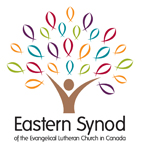It’s that time of year when we conduct our Congregational AGM’s, elect new leaders and re-convene new Congregational Councils.
Sometimes we struggle to identify those new leaders; people are reluctant to serve. In some congregations, council seats sit vacant.
I wonder if that might have something to do with the cultures that have developed in some of our congregations about what the work of the council is and how that work should be engaged.
The Congregational Council’s job description is spelled out in Bylaw Part VII, Section 11 of the ELCIC Model Constitution for Congregations. The opening words read, “The Congregational Council shall
lead the congregation in stating its mission, doing long-range planning, setting goals and priorities and evaluating its activities in the light of its mission and goals.”
Do the agendas we set for our Congregational Council meetings reflect this priority? In many instances, I suspect not. So let me suggest a few tips for those of you who are looking to re-focus the work of your Council.
1. Schedule meetings to have a specific start and end time. The first item for any meeting should be determining when it is going to end. Two hours max! Trust me, you will accomplish everything you need to if you follow this rule.
2. Determine your agendas based on a 60/40 rule where 60% of the time is allotted to transacting the items of business that require attention and 40% to prayer, study and structured reflection that will specifically help the council to “lead the congregation in stating its mission, doing long-range planning, setting goals and priorities and evaluating its activities in the light of its mission and goals.”
3. Engage the 60% business time in an organized and efficient fashion. Reports should be concise and should have clear recommendations attached if follow-up actions are required.
4. Make full use of the abundant gifts of your pastors and deacons in leading that 40% missional learning, planning and reflection time. These folks are called and gifted to do this work. Unleash them and let them do what you’ve called them to do!
5. Map out an annual plan for how you will use the missionally focused parts of your agenda. What components do you want to include? A bible study series? Analysis of community needs? Reviewing strategic priorities? Continuing education around a particular ministry focus? The sky is the limit, but none of it will happen if you don’t plan for it!
6. At some point during the year, spend some time learning about that part of your mission which you share with the wider church. Your congregation’s ministry is much broader than most of us realize. Learn about it and celebrate it! There are abundant resources available on the Eastern Synod, ELCIC and Lutheran World Federation websites to set you on your way.
7. End each of your meetings with a brief evaluation of your time together. Participants should always feel that they are going out of the room carrying more than what they brought in. If you want to know if that’s happening, you need to ask.
The experience of serving on a congregational council should enrich and not diminish your life! Careful and considered planning can do an awful lot to ensure we experience the former and not the latter! Let’s get to it!
